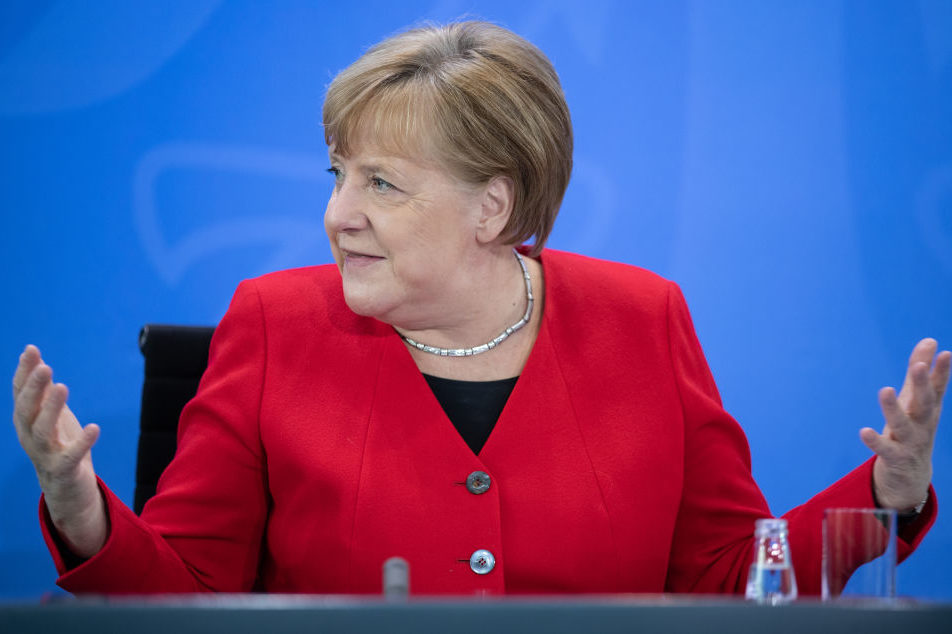Angela Merkel unveiled a new phase of Germany’s strategy for dealing with coronavirus last night. Much of what she said was already widely known, but the nuances of what she announced were still revealing. Two households will now be able to meet up with each other. Soccer — albeit behind closed doors — is back on. Restaurants and hotels will reopen within the next few weeks. And people in care homes will be allowed one visitor. ‘All in all, it is a balanced decision’, Merkel said in typical Merkel fashion after the meeting between the government and Germany’s 16 federal states where the next phase was thrashed out. In reality, however, Germany is witnessing a major shift in its approach to the crisis, as Berlin is no longer in charge. Instead, federal states have taken the reins. In Germany’s federal system, the state governments have always been in charge to enforce lockdown policies, but, up to this point, they were on the same page in regards to a lot of issues and usually followed what Berlin was suggesting. Not anymore.
This new approach became obvious over the weekend. First, the state of Saxony-Anhalt announced an easing of the contact restrictions with now five instead of two people allowed to gather in public. Shortly afterwards, Lower Saxony declared that its food service industry will be able to re-open again in May. Then Mecklenburg-Western Pomerania’s government said that vacationers should consider a trip to one of its Baltic Sea resorts this summer. Bavaria then followed up by announcing its own plan, including the re-opening of restaurants and hotels.
The official decision coming from the meeting on Wednesday stated that the federal government and the states had ‘defined the path to a step-by-step re-opening mutually’, but that is just political rhetoric, as every state produces new rules for itself. ‘We see a great variety of specific individual regulations’, Merkel said.
The only regulation where the states are pretty much in agreement concerns contact restrictions. These remain in place until June 5, but from now on two families are allowed to meet up with each other again. The states will also enjoy independence when it comes to the re-opening of restaurants, bars, hotels, universities, day care centers, theaters, gyms, cinemas, casinos, brothels, if they apply to a general hygiene protocol.
There’s one last anchor for the federal government to hold on to the idea of national cohesion, something Merkel called ‘a mutual clamp’ and Bavaria’s state premier Markus Söder labeled an ‘emergency brake’. All steps to re-opening are under the nationwide rule that the number of infections doesn’t increase rapidly again. If 50 per 100,000 inhabitants in a Landkreis (regional district) or municipality are tested positive for COVID-19 within seven days, the old restrictions apply again to that territory, whether federal states like it or not.
The reason for such a specific upper limit of infections is that researchers think the pandemic was able to unfold in Germany and Europe because the virus could spread at crowded events and places in villages and cities. These local hotspots were a springboard for the pandemic. If a city is about to become such a hotspot, it ought to be locked down again, the logic goes. The major issue with this theory is that it usually takes about a week before the infection of hundreds of people is detected. Because the governments are slowly easing travel restrictions, infected people from hotspots could already have left their city or region before the government could intervene.
At the moment, only three Landkreise in Germany have crossed the imaginary line of 50 newly-infected per 100,000 inhabitants — Heidenheim and Zollernalb in the southern state of Baden-Wuerttemberg, and Greiz in Thuringia which has seen 85 people contracting the virus within the last week. Merkel mentioned at the press conference on Wednesday that one Landkreis, without saying the name, could be subject to tough restrictions based on the numbers.
In general, Germany can be happy that it was able to overcome the first phase of the pandemic. However the fate of the country and its success story in this crisis now lies in the hands of the 16 state governments. ‘We will see measures that heavily vary from region to region’, said Hamburg’s state premier Peter Tschentscher. For some, this is the beauty of constitutional federalism. For others, the current pandemic might be the wrong case study for local governments to show that they are capable of handling such an enormous task.
This article was originally published onThe Spectator’s UK website.


















